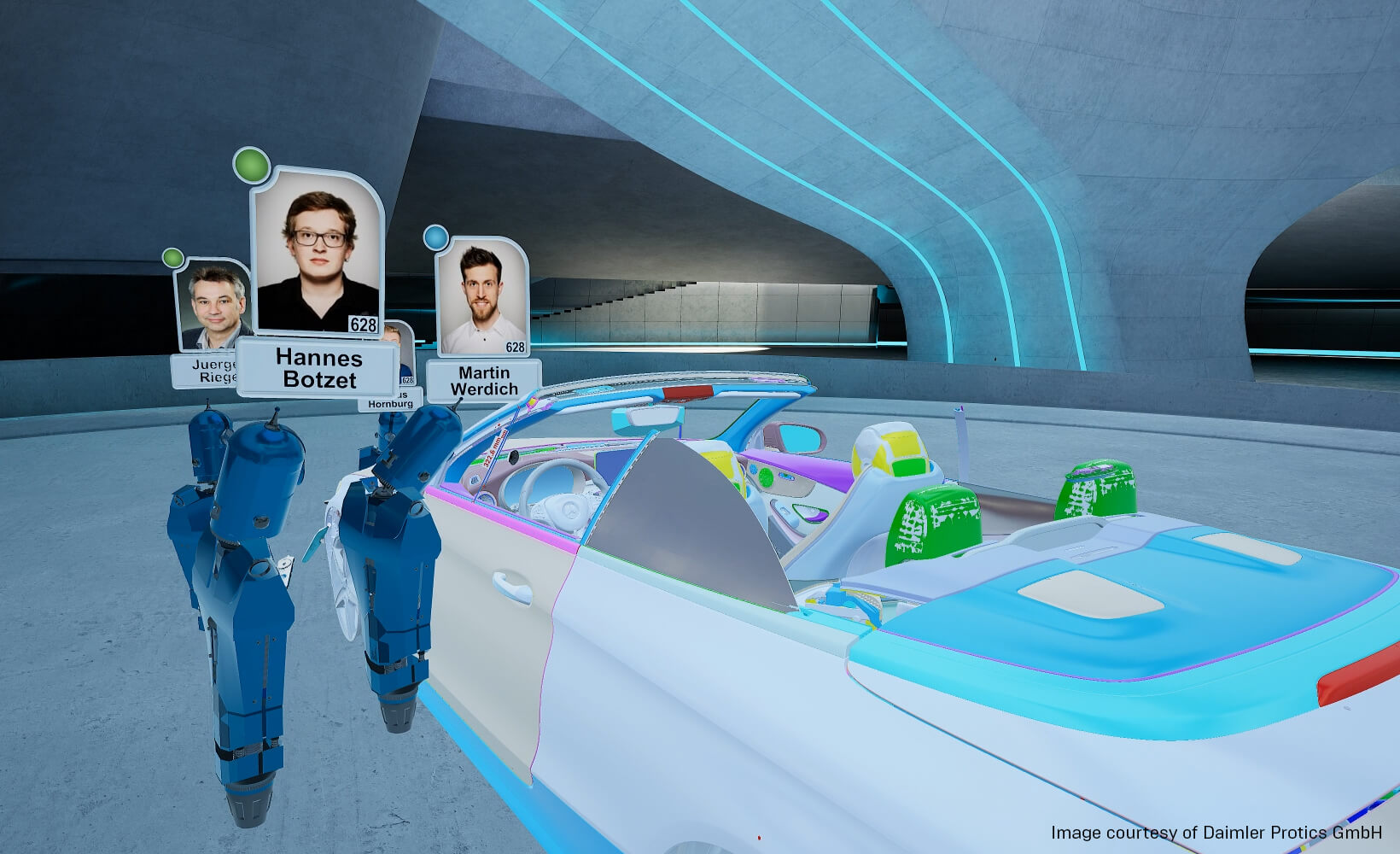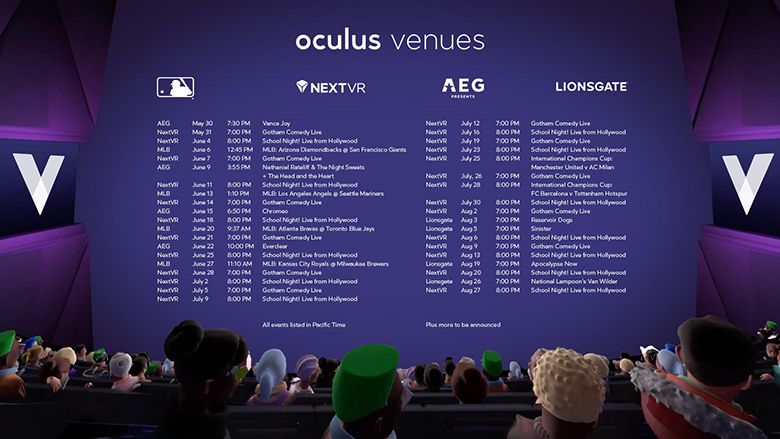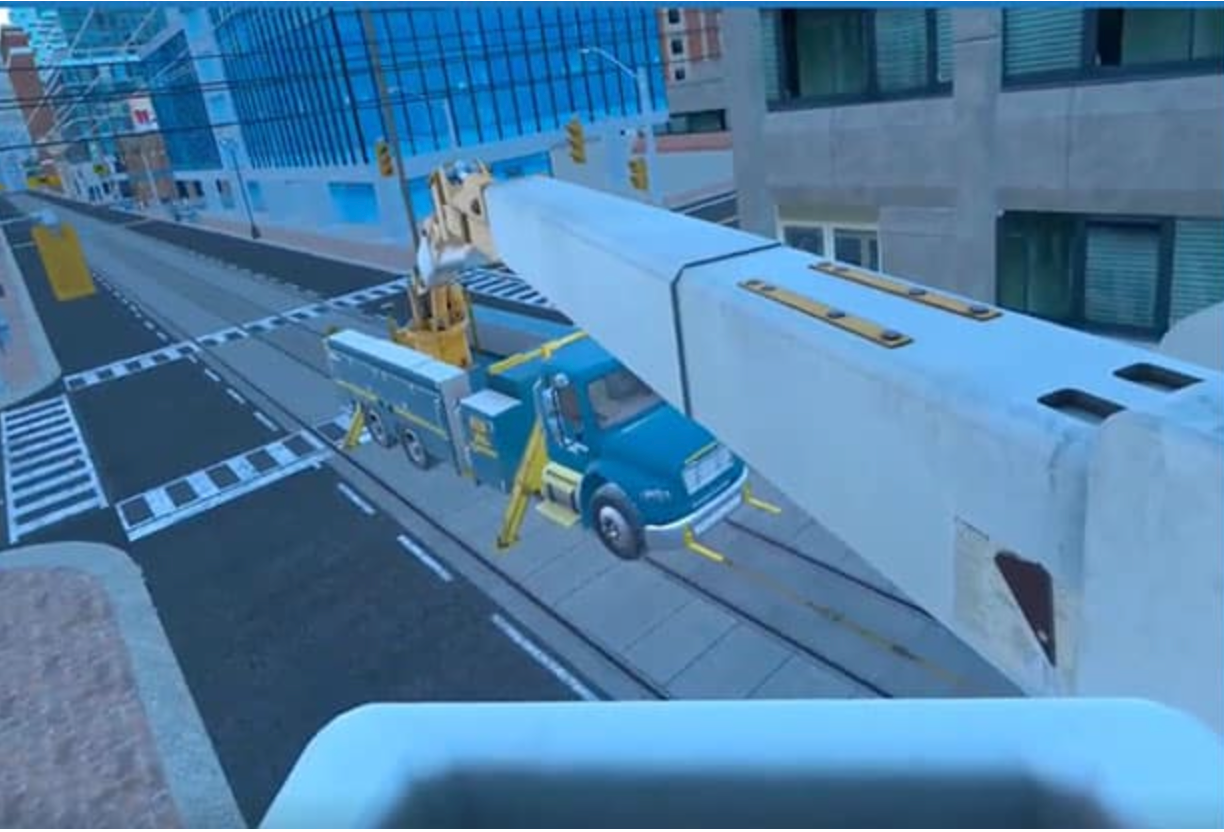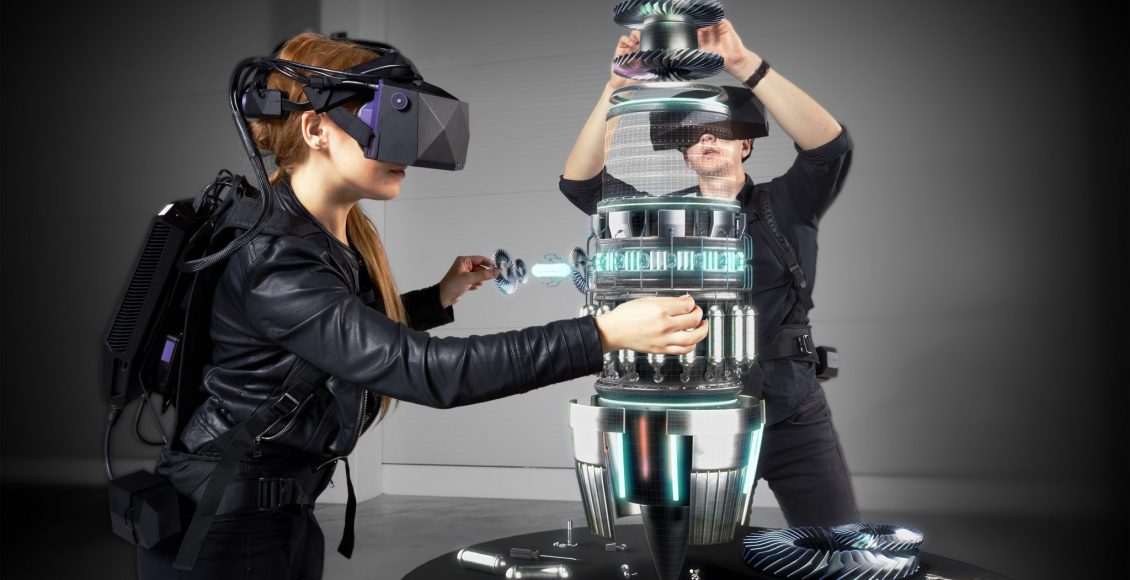The automotive industry has long been using game engine technology for visualization. Many of the key players have harnessed it to power their digital showrooms. But the configurators used by car salespeople to demonstrate different paint finishes and interiors only appear at the very end of the automotive pipeline. There’s an untapped ocean of potential for real-time technology earlier on, during the design and engineering phases.
And we’re not just talking Cave Automatic Virtual Environments (CAVEs) here—the physical projection spaces that some manufacturers have previously used for VR testing of design and safety. Today’s design and engineering teams at forward-thinking automotive manufacturers are visualizing, iterating, and collaborating on vehicle designs in VR, from anywhere in the world.
German car giant Daimler AG is a place where the future of automotive engineering is playing out right now. Its 3D and digital data arm, Daimler Protics, has created a multi-user, online environment for engineers, built on Unreal Engine. This innovation is already being used across the company to provide virtual reality walkthroughs and real-time 3D visualization, slashing development time and costs, and helping to deliver higher-quality product.
A multiplayer real-time game for engineers
Daimler Protics is a subsidiary of Daimler AG, employing over 600 people across three locations in the fields of product data management (PDM) and software development. It supports and advises the corporation on everything from design and optimization to processes and systems, leveraging complex product data to create digital innovations that lay a path for the business’s future.
Daimler had been using UberEngine, a technical 3D CAD renderer created by NetAllied Systems, to give engineers a quick look at large CAD datasets and make inspections of vehicle designs. Daimler Protics had the idea of leveraging the core functionality of a game engine to open up the engineering visualization process, and asked NetAllied to develop a plugin to integrate UberEngine into Unreal Engine.
“Basically, we’ve created a multiplayer online game for engineers,” says Jürgen Riegel, Project Lead and Principal Software Architect on the company’s UE4-based VR collaboration environment called Engineering Hub. “We needed a solution that would enable an engineer to load CAD data directly into a game session. We used a tool developed by NetAllied to inject a CAD render into the Unreal Engine render pipeline. That lets us have a fully Unreal network game and load 3D data directly from the PDM system at runtime—no data prep necessary.”
The results have been transformational. Whereas previously Daimler’s engineers merely had a fast way to see CAD data, now they have that and all the real-time, interactive functionality of a game engine on top.
Relying solely on 2D screens to communicate and visualize designs has become a thing of the past. Engineers have the option to put on a VR headset and interact with the design at full scale in a fully immersive environment.
Fixing engineering problems using real-time visualization
The innovation has not only had an impact on accuracy, but also on output. “Engineers love to see the data in an HMD,” says Riegel. “It’s much easier to judge sizes and assess problems if you see them with your own eyes. Also the ability to do an ad-hoc collaborative session with your data increases productivity.”
With design and engineering teams located in different parts of the world, having this means of multi-user collaboration in a shared immersive environment that’s accessible from anywhere has been a huge win.
Teams no longer have to wait for feedback via email or phone calls. Reviewing work, sharing ideas, and fixing issues can now happen on the spot, collaboratively in real time. As well as supercharging creativity and efficiency, this also has a significant effect on the bottom line. “There are massive timesaving and ROI benefits from taking this approach to visualization,” says Riegel. “We have such a diverse design process around the world. Reducing travel costs and removing barriers to fast problem solving with 3D data is a big time and cost saver.”
With production facilities and R&D teams spread across the world, complex technical conversations about 3D data often have to be held via Skype. “But that’s a poor medium for discussing 3D data,” says Riegel. “So we aim to become ‘Skype for 3D’ ”.
Now, Daimler teams in 30 locations around the world have the capability to collaborate, review, and provide feedback in real time, with an increasing number of VR review sessions taking place across Germany, USA, India, and China. Since January 2019, Engineering Hub has been directly integrated with Daimler’s PDM system, and there have been discussions around rolling out the solution for Spectator Screens, which could put these visualizations in front of tens of thousands of the company’s PDM users.
The power of real-time technology has enabled Daimler to remove the silos and guesswork that can hinder productivity, driving them towards a more agile and collaborative engineering process. Their Engineering Hub is already productively used in many cases across the corporation—and it’s just the beginning.
Quelle:
https://www.unrealengine.com/en-US/spotlights/real-time-visualization-transforms-daimler-s-engineering-pipeline?utm_content=106706694&utm_medium=social&utm_source=linkedin&hss_channel=lis-E2lxUkMEOG




